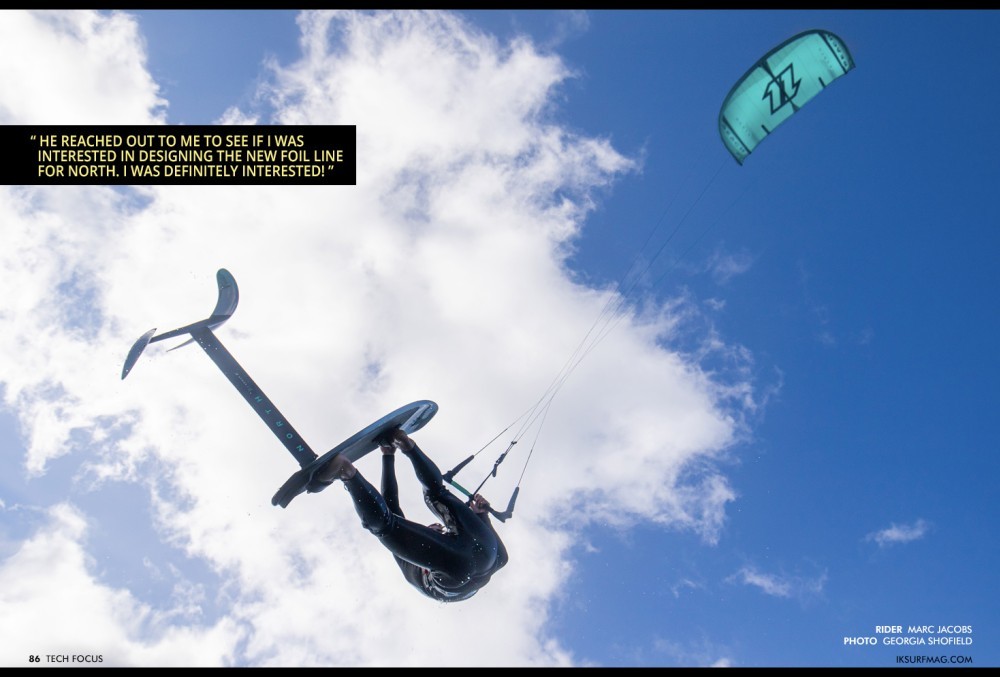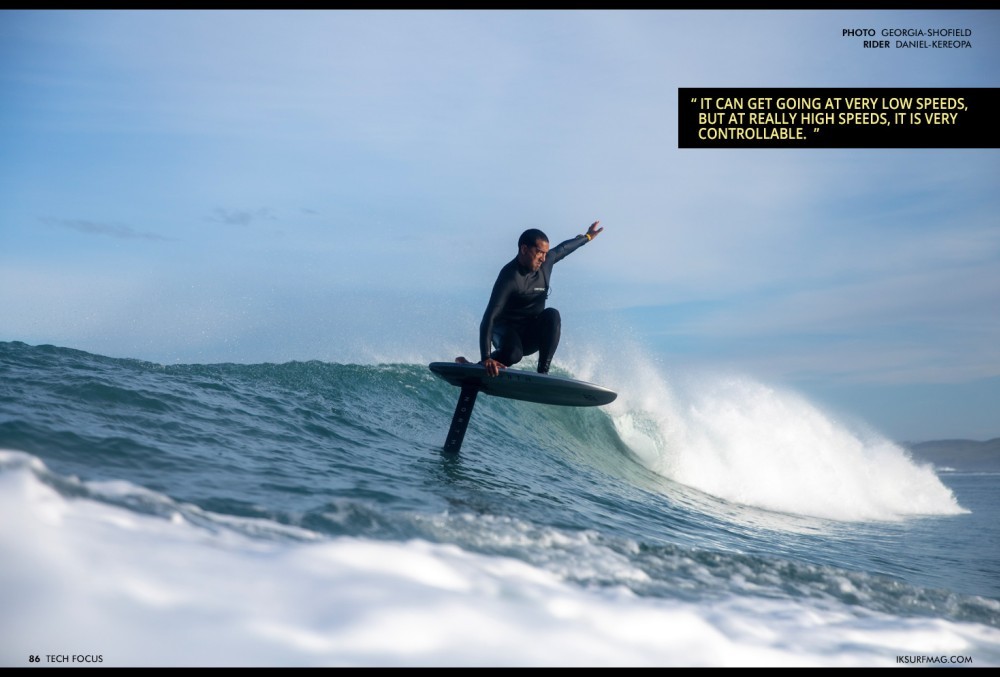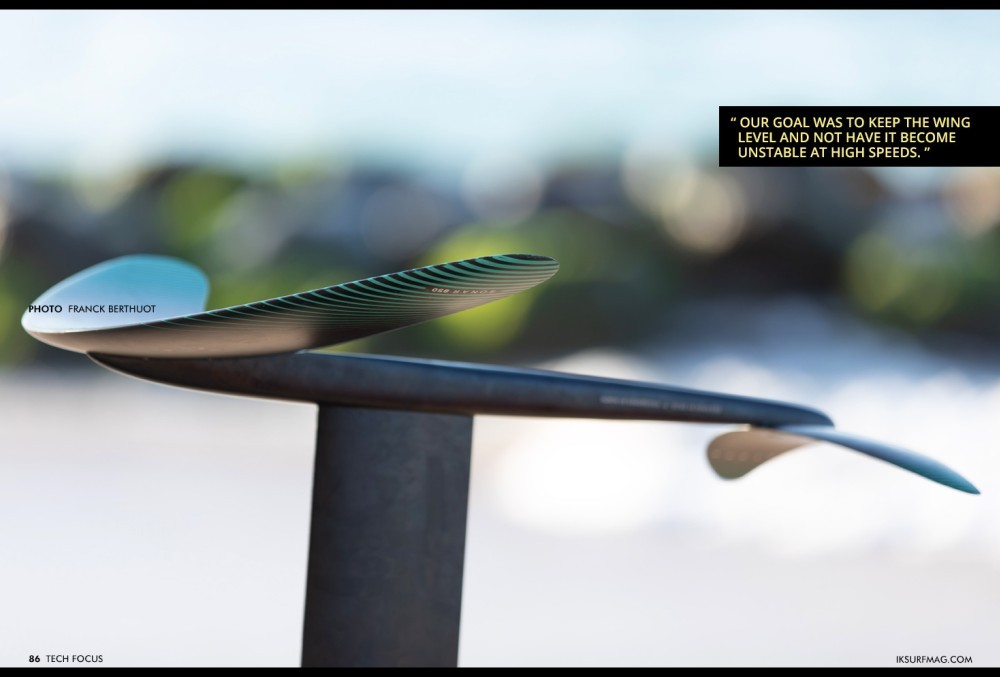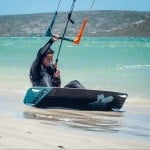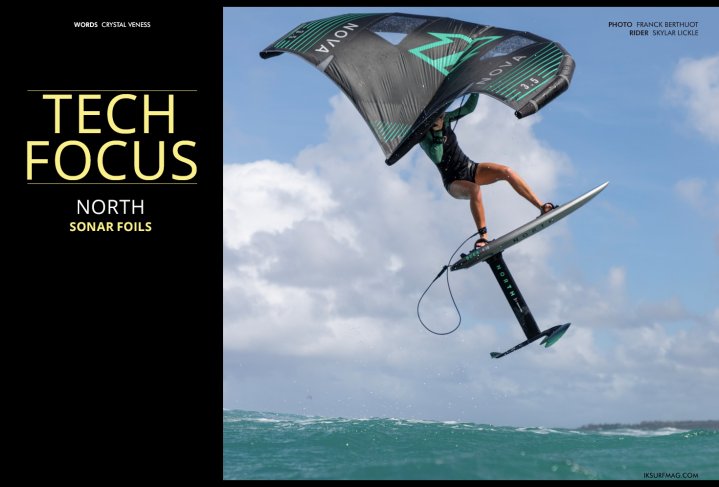
Tech Focus - North Sonar Foils
Issue 86 / Tue 13th Apr, 2021
Hydrofoil designer George Hadril joined the North team to develop their latest foil equipment. Read about how he works, and get the low down on the best foil he has ever designed in this North Tech Focus!
George, thank you for taking the time to do this interview with us! Can you tell us a bit more about yourself and your background? How did you get connected with North, and which products are you focused on developing?
I am a lifelong sailor and have always been interested in boats, airplanes, and kites. I started racing small boats as a child and then raced on the sailing team in college. When I was doing my graduate studies in engineering, I wanted to keep sailing but did not have room for a boat, so I learned to windsurf and was passionate about it for 20 years.
In 1999, I learned to kite on the two-line Wipika kites, which was pretty wild in the early years of kiting. I survived that and eventually bought the original Carafino kite foil and learned how to foil with a kite. Then I got one of the first race foils from France, the Spotz 1. It was like learning all over again. Good foils were hard to get at the time, and none were available in the US, so I decided to start Delta Hydrofoil to make kite race foils in the US. That was nine years ago. Since then, foiling has grown quite a bit.
I have a PhD in Chemical Engineering, and I worked in the electroplating/metal finishing industry for 30 years. I have retired from that field and now focus solely on hydrofoil development. I had worked with Mike Raper on the design of the AV8 race foil when he was at Neil Pryde. When he migrated to North Kiteboarding, he reached out to me to see if I was interested in designing the new foil line for North. I was definitely interested! The 2020 and 2021 lines are the result of my work with the North team.
Tell us a bit about your design approach.
The design of the North line was a logical progression from the preliminary development I had done at Delta Hydrofoil. I have eight years of experience designing foils, primarily designing high-performance race foils. I took that knowledge and applied it to recreational hydrofoils.
The pioneering surf foil designs by Alex Aguera used very thick foil sections appropriate for the conditions in Hawaii. At that time, most other brands were simply copying Alex. My approach was to design much lower drag foils with thinner wings, which would work better in weaker waves and for pumping. Fortunately, this type of foil also works well for wing foiling.
As the foil frenzy continues to spread, customers and riders continue to gain more knowledge about hydrofoiling, and brands have had to work hard to stay ahead of the curve. How does the North Sonar Foil System differ from other kite foils on the market?
Now that people have developed confidence in kite foiling, they want better performing hydrofoils. In the past, I would have thought they would want a race type of foil, but as it has turned out, people don’t want to go 30mph. I like racing, but I admit it’s intimidating, and the crashes hurt! Instead, wings have gotten bigger, and people have chosen to go slower. I’m blown away - I was 180 degrees wrong on this.
Using bigger wings means the whole hydrofoil becomes even draggier – even slower. Solving this problem has allowed me to create new wing designs with a much greater speed range that are easier to handle than in the past.
I’ll give you a big wing, but that big wing is going to be fast. It’s going to have low drag, you’re still going to be able to go 25mph on it, and at low speed, it’s going to be all you want. A 1500cm2 wing is still phenomenal for kiting because it has that speed range, plus you can wing foil it, and it’s great in the surf.
What are the key developments from 2020 to 2021 with the North Sonar Foils?
The 1500R, 1850R and 2200R Reflexed Wings: The reflexed wing design is unique, and no one else is offering it. In fact, we have applied for patents on this design. These wings feel much smaller than their actual size, are extremely pitch stable and have a very wide speed range. I think people will be blown away when they try them.
The HA1250 and HA1450 High Aspect Wings: One of the dirty little secrets of wingfoiling is that they don’t go upwind very well. One of the things that a high aspect wing does particularly well is improving windward performance. So, for winging in flat or choppy water, the HA wing is perfect. It’s also your ideal wing for pumping and connecting bumps.
The product description talks about reflexed hydrofoils and reflexed camber. What does this mean? How does it affect performance?
A normal hydrofoil wing is what’s called under cambered – it’s more curved on top and flatter on the bottom, sometimes concaved on the bottom. If you measured halfway between the top surface and the bottom surface, you’d get what’s called the camber line. It dictates how the foil is going to behave. If I drew that line just by itself, it would be concaved downward.
A reflexed foil has a different shape. Instead of the trailing edge being orientated downward, it is orientated slightly upward. What that means is that the trailing edge doesn’t create any lift at the back of the foil. In fact, there’s a localised downforce on the trailing edge of the wing, which acts as a stabiliser would. So, in essence, when you use a reflexed foil, it’s like you’ve built a mini stabiliser into the back edge of the wing.
This does a couple of things: Firstly, it makes the wing itself a lot less pitch sensitive – it needs less stabiliser angle to be stable in pitch. Secondly, it gives the foil an incredible speed range. It can get going at very low speeds, but at really high speeds, it is very controllable.
Most wings start to foil around 10mph (maybe 8mph), but by the time you get to 20mph, big wings are pushing hard, limiting the amount of top-end speed. Our goal was to keep the wing level and not have it become unstable at high speeds.
With many wings, particularly big wings, as you go faster and faster, the nose of the board starts going down, and the foil starts riding at a negative angle of attack (the angle the wing flies through the water on). In that negative angle state, the wing becomes very pitch unstable. But a reflexed foil just doesn’t behave like that. It’s extremely stable at high speed because the trailing edge has that stabiliser built into it.
I would encourage people to try the reflex wings. I suspect that most people will appreciate the unique characteristics of these wings.
The Sonar Foil System is designed to be modular with the option to change out different components to customise your ride. How does the modular system benefit the customer?
It’s a significant cost saving to the customer to be able to change the front wing and get different performance from a foil rather than having to buy a completely different foil. This is particularly true now that so many different foiling disciplines are being enjoyed.
The carbon front wing is available in 1500R, 1850R, and 2200R. Can you tell us more about what type of rider or riding style would be best suited to each size?
When someone contacts me for a hydrofoil, I always ask how much they weigh. If you were interested in kite foiling, you’d gravitate toward the smaller wings. For winging, the HA wings. And for surfing, the reflexed wings – depending on your weight and the power of the wave.
If you want to wingfoil, the 1500R is suitable for a medium-lightweight rider, and the 1850R for a heavier rider. But if you only want to wing, then the HA is the best choice - the HA1250 for most conditions and the HA1450 for light wind.
For me, the stand-out wing is really the 1500R because it is excellent across all disciplines. I believe it is the best wing I have ever designed, and it also works great for winging and surfing for medium to light riders.
Videos
By Crystal Veness
Editor at IKSURFMAG, Crystal Veness hails from Canada but is based in South Africa. When she isn't busy kitesurfing or reporting on the latest industry news for the mag, she is kicking back somewhere at a windy kite beach or working on creative media projects.




